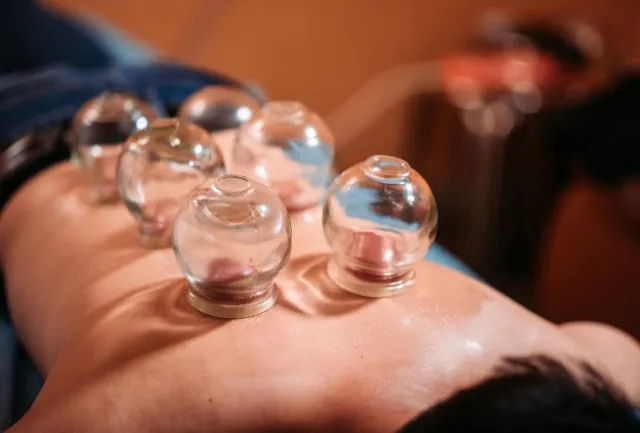Many onlookers have noticed the dark red circles appearing on Olympic athletes. Have you wondered why they are there?
During the Olympics, many spectators have noticed an unusual sight at Olympic athlete’s backs.
They pointed out that there are many dark red circles on the backs of some athletes, particularly swimmers.

Have you wondered why?
Have you wondered why these marks look peculiar and what they mean for athletes’ recovery and performance?
Here’s an explanation for these distinctive bruises that might leave you stunned.
What are these dark red circles?

At this year’s Olympics in Paris, numerous athletes have been seen with large, circular bruises on their backs.
While these marks might initially seem like the result of a bizarre encounter, they have a different origin.
They actually stem from a traditional healing practice known as cupping therapy.
This ancient technique involves placing cups on the skin to create suction. The suction helps increase blood flow to the targeted area.

By doing so, cupping therapy aims to promote healing and muscle recovery. This method has been used for centuries and continues to be popular among athletes today.
The purpose of cupping therapy
Cupping therapy is employed to aid in muscle recovery and is considered a form of deep tissue massage.

The therapy is believed to help alleviate muscle soreness and improve overall recovery. Many athletes, including swimmers, use cupping as part of their regimen to maintain peak physical condition.
Cupping therapy has a historical background and continues to be used today.
Cupping therapy has been around for centuries and was notably used by athletes in previous Olympic Games.
For instance, at the Rio Olympics in 2016, several competitors were seen with similar bruises. Gymnast Alexander Naddour famously credited cupping with significantly contributing to his health and performance, stating it was the best investment he had made for his well-being.

Basketball player Kyle Singler has also spoken highly of cupping therapy.
He noted that while the bruises might look severe, the benefits of the therapy in terms of recovery and muscle relaxation are substantial.
Despite its popularity, the effectiveness of cupping therapy is still debated.
According to Harvard Health, some studies suggest that cupping may offer relief for certain musculoskeletal conditions.
A 2022 review indicated that wet cupping (a variant of the therapy) might be effective for lower back pain.Overall, cupping therapy is regarded as safe when performed correctly.

As a report by Harvard Health, some studies explained: “Most experts agree that cupping is safe. As long as those treated don’t mind the circular discolorations (which fade over a number of days or weeks), side effects tend to be limited to the pinch experienced during skin suction.”
Most experts said that the therapy’s side effects are usually minimal, primarily consisting of temporary discomfort from the suction.
However, while skin infections can occur, serious complications are uncommon.